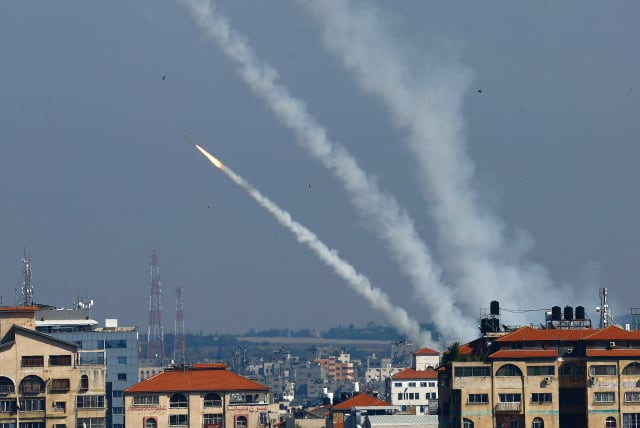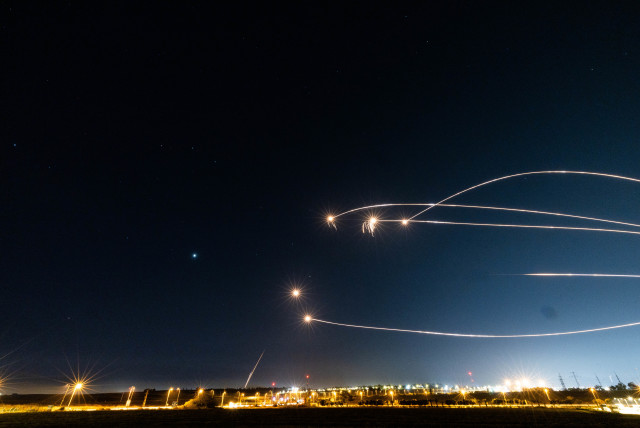Israel's Operation Shield and Arrow: Is blowing stuff up a strategy?

MILITARY AFFAIRS: So far there are no signs that the IDF’s masterful tactical wins against Islamic Jihad will yield any extended period of quiet.
Several times in the last 17 years Israel has fought wars where it “won” tactically, but achieved little or nothing in the longer-term strategic picture.
Some of that comes from using the same playbook of blowing things or people up. If Israel uses the same playbook as in the past, why should it expect a different result?
In significant conflicts (where usually hundreds or more rockets were fired on Israel in a short period) with Hezbollah and Hamas, and more recently in multiple run-ins with Islamic Jihad, in 2006, 2008-9, 2012, 2014, November 2018, May 2019, November 2019, February 2020, May 2021, August 2022, every time the IDF killed far more “top commanders” and fighters on the other side than were killed on the Israeli side.
However, each time, the IDF’s tactical dominance failed to prevent the other side from firing rockets extensively throughout the civilian home front, both in volume and in reaching larger cities beyond the Gaza corridor.
Why can't Israel deter Gazan terrorist groups from firing rockets?
The IDF and many commentators have felt it achieved a strategic win by keeping Hamas out of this latest round of fighting.

And from the perspective of preventing this specific round from needlessly and arbitrarily deteriorating into a longer war like in 2014 or 2021, keeping Hamas out of the mix was in fact a wise and strategic win. It is also true that killing a terrorist group’s leader slows it down for some amount of time.
However, since November 2019, four of the last five conflicts with Gaza have been between Israel and Islamic Jihad, despite many rounds of killing that group’s leaders.
Certainly, Islamic Jihad can do far less damage to Israel than Hamas, but if Jerusalem has to fight Gaza’s weaker terrorist group four times in less than four years, including its big brother Hamas an additional time in May 2021, how much has Israel really accomplished?
After 2006 and 2014, top Israeli officials shifted mentally from telling the public that the IDF could achieve decisive “victory” to talking merely about “restoring deterrence.”
Back then, the idea was to fully deter any and all terrorist groups in Gaza. Now Israel cannot even deter Islamic Jihad, the weaker group, for more than a year or so at a time.
And is Hamas really deterred? Or, if it is facilitating Islamic Jihad fighting Israel, is it merely using other means to fight against Jerusalem, while avoiding the full blowback it would get if it were fully engaged?
Some observers are also saying that Hamas is just playing for time to build a more powerful rocket arsenal so that when it does decide to join another round with Israel, it will be able to hurt the home front far more.
So the Jewish state could easily come out of this conflict having “won” just like in August 2022 and some of the other recent rounds, but with no real ability to deter Islamic Jihad from another round in the near future.
West Bank terrorism and Iranian proxies
All of this is also going on while the IDF has fought valiantly, but been unable to end the waves of terrorism in the West Bank which started in March 2022. The Palestinian Authority has either lost the capacity to stop the waves or is too frustrated with its inability to achieve any new gains with Israel to care.
Within the West Bank, the trend is worrying, with the PA having long lost control over Jenin and Nablus. Could this make a full Hamas takeover of the West Bank (though those cities are controlled by local groups, not Hamas) more likely?
In addition, Iran’s proxies in Syria and Lebanon continue to try to test Israel’s defenses and resilience.
Maybe most importantly, the general strategic picture, according to Military Intelligence, is that the Islamic Republic has more tools to make trouble for Israel, feels more confident lately, and is more likely to push its proxies to start bolder conflicts with Israel in 2023 than it was in 2022.
Attempts at grand strategy with no real endgame
There has been a small bit of grand strategy by the current government of Prime Minister Benjamin Netanyahu and the former government of Naftali Bennett and Yair Lapid.
Both governments have continued to support the policy of Qatar handing over tens of millions of dollars per month to Gaza (translation: Hamas) and mostly supported increasing the number of worker permits for Gaza to 17,000. These are techniques to mix some “carrots” with some “sticks” to incentivize Gaza to prefer stability over war.
But this is at most a medium-term strategy. It neither leads the Palestinians as a whole, in both the West Bank and Gaza, substantially closer to real diplomacy and a final much-longer-term ceasefire, nor does it bring Israel closer to being able to use military means to coerce Hamas into such a longer-term ceasefire by virtue of a deeper land invasion.
Many diplomats and some Israeli security officials believe bigger economic incentives to Hamas, an artificial seaport and larger foreign investment for industrial zones, could lead to a 10-year or longer hudna, or ceasefire.
Alternatively, many top security officials have argued for a temporary invasion of a few weeks or a few months, followed by a prompt withdrawal and handing Gaza back to some mix of the PA and an international force. This would not be a move to reconquer, but just to clean out enough of Hamas’s weaponry and leaders so that someone other than Israel could take control.
Both of these options have been called unrealistic and have been said to have previously failed in other time periods.
However, if either of them worked, it would not only gain a longer period of quiet, it would also reduce Iranian influence on Israel’s borders.
And after the long list of conflicts since 2006, and with Iran’s hand becoming more, not less, threatening to Israel, maybe gambling on something that failed in a different time period and context might not look as bad.
None of the top political officials trying to lead the country are seriously talking about any of these broader options.
For the last several years, the country has been consumed by the pro-/anti-Netanyahu debate, limiting attempts to reach broader consensus on strategic moves.
SO WHAT is happening now and will happen next?
The current conflict could have easily ended on Wednesday night.
Neither side is currently fighting for anything all that substantive or trying to achieve any new major goal.
As important as the Islamic Jihad official was whom the IDF killed Thursday morning, The Jerusalem Post has learned that he was less important than the three killed on Tuesday.
It seems he was not killed on Tuesday due to a mix of it not being the right technical moment (exact timing, intelligence and who else is around a target can heavily impact when to pull the “trigger”) as well as other factors, possibly holding back in order to have additional later targets if necessary.
In any case, deterrence achieved by killing a top leader is usually temporary in the Middle East. Even possibly the most successful such assassination in the last few years – the US’s killing of Iran spy chief Qasem Soleimani in January 2020 – bought only some months or a year or so of a deterred Iran, before Tehran got aggressive again.
Since Wednesday night, the debate simply deteriorated into the abyss of how each side looks and will emerge from the ceasefire to better claim who “won.”
This has happened before.
In 2014, Israel’s goal seemed to be to get Hamas to stop shooting rockets for about a week using airstrikes, including hitting the “best” Hamas targets.
When all of those were bombed, it started striking “command centers” and “intelligence centers.” Yet, both in 2014 and in virtually every round since then, there has not been a single target or group of targets that Jerusalem has been able to attack that would immediately force quiet on Gaza.
The only time in the last decade that the IDF even tried an invasion to stop the rocket fire was in 2014, but it was a very limited invasion of a couple kilometers.
Eventually, the cabinet and the IDF searched for a new goal they could present to the public as a face-saving measure for ending the operation – destroying Hamas’s attack tunnels (since it couldn’t stop the rocket fire).
This time the IDF has not even talked about using land forces, and the tunnel threat has been mostly neutralized, so Israel seems to be wanting to present itself as tough by insisting on a ceasefire without a promise of immunity for Islamic Jihad officials going forward. As if that refusal by itself will bring quiet for five years, let alone 10 years.
Bizarrely, it may be that any moves toward a truly longer ceasefire, deal or tougher operation will need to wait not only until PA President Mahmoud Abbas dies and is replaced, but also until the Netanyahu trial ends, and the Israeli political system moves on.
